Earth in the Balance: 7 Crucial Tipping Points
7 Tipping points

Humans must stay within certain boundaries if they hope to avoid environmental catastrophe, a leading group of environmental scientists says. Crossing those limits may not rock the Earth itself, but would lead to harsh consequences for human existence on the planet as we know it.
There are two kinds of boundaries, the researchers proposed in October 2009. "One represents a tipping point — you cross that and irreversible, catastrophic bad stuff happens," said Jonathan Foley, an ecologist at the University of Minnesota. "The other would involve more gradual changes, but still well outside the range of anything we've seen in human history."
Humans have already pushed the planet beyond some of the limits, such as those related to climate change and the nitrogen cycle. But some scientists who responded in the journal Nature questioned the threshold idea, and others commented that such limits seem arbitrary. Still, many applauded the idea of limits as benchmarks or starting points.
Here are the seven planetary boundaries that have been put on the table for discussion.
Stratospheric ozone
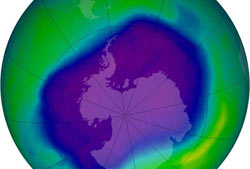
Earth's ozone layer might have eroded to the point where people get sunburned within minutes, if political leaders and scientists had not rallied to regulate the chemicals destroying the ozone, which protects us from solar radiation. The Montreal Protocol banned chlorofluorocarbons (CFCs) in 1989, and helped banish the specter of a future world with a permanent ozone hole yawning above Antarctica.
Environmental scientists have proposed a tipping point of a 5-percent decrease in ozone in the stratosphere (an upper layer of the atmosphere), based on ozone levels from 1964-1980.
A more realistic tipping point for stratospheric ozone might be higher, said Mario Molina, a physical chemist who heads the Center for Strategic Studies in Energy and the Environment in Mexico City. Truly catastrophic ozone depletion all across the globe would be something like a 60-percent decrease. But Molina added the lower limit on ozone destruction makes sense, given the damage to human health and the environment beyond ozone loss of 5 percent.
Get the world’s most fascinating discoveries delivered straight to your inbox.
Land use
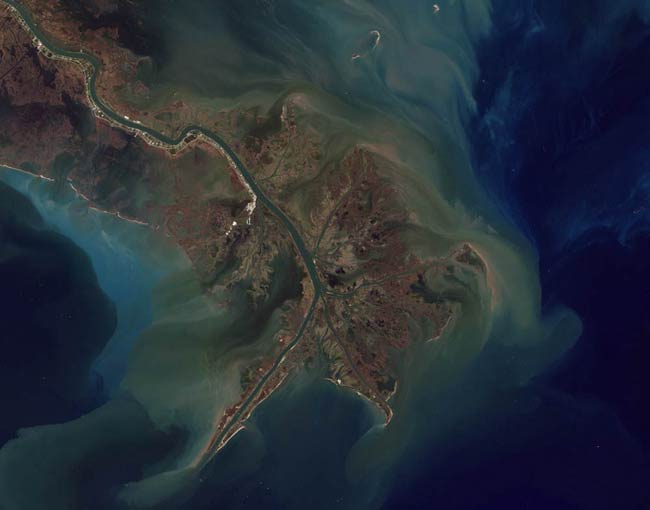
Agriculture and industry have long formed the bedrock of human civilization, so that the current crop cover supporting today's population has reached about 12 percent of land. Now environmental scientists have proposed a 15-percent land use limit, leaving some wiggle room, but still protecting animals and plants from losing valuable real estate.
The limit is a "sound idea" but also premature, according to Steve Bass, a senior fellow at the International Institute for Environment and Development in London. Bass pointed out that the arbitrary limit might leave policymakers unconvinced. After all, converting land to farming and industry has delivered huge benefits for human populations.
A better boundary of environmental health might be a limit on soil degradation or soil loss, Bass said. That could gauge the environmental impact of different types of land use, such as intensively farmed cropland versus more sustainable agriculture. Poor land-use practices have historically led to loss of soil and have also created terrible dust storms, whether in the 1930s Dust Bowl or in modern-day China.
Land use

Drinking water represents a basic necessity for life, but humans also use huge amounts for growing crops. Foley and his colleagues suggested that use of “blue water” sources — evaporation from rivers, lakes, groundwater reservoirs and irrigation — should not go beyond 960 cubic miles (4,000 cubic kilometers) per year, or just a little less than the entire volume of Lake Michigan. Humans currently use 624 cubic miles (2,600 cubic kilometers) each year.
But that global limit on freshwater might be too high, said David Molden, deputy director general for research at the International Water Management Institute in Sri Lanka. Molden contends the global view overlooks local conditions that limit how easily people can access freshwater, whether it's lack of infrastructure or lack of money, as well as the proportion of its water each region uses.
Intense agriculture might use up most of the freshwater in one region, not to mention a growing demand for biofuel crops that stresses water supplies. Another part of the world with plenty of freshwater might not use much for farming at all. So water limits might have to be customized for the region. Still, Molden called the idea of planetary boundaries an "important warning call" and a starting point to think about limits.
Ocean acidification
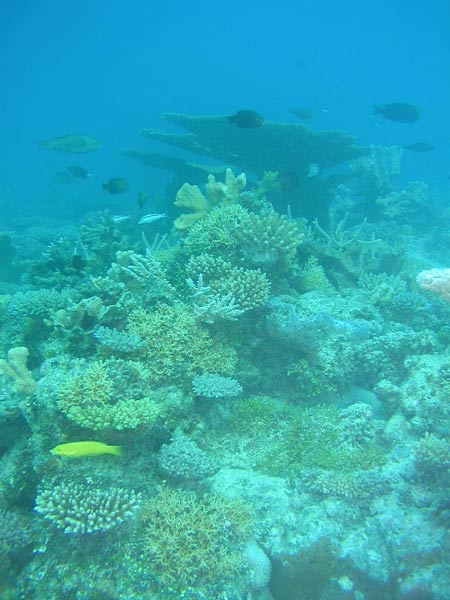
Higher levels of carbon dioxide can dissolve the minerals necessary for coral reefs and other marine organisms to thrive. That led environmental scientists to label ocean acidification resulting from the increase in the greenhouse gas carbon dioxide as a tipping point boundary, or one that if crossed could have catastrophic consequences for both marine life and humans who depend on the resources. The boundary definition focuses on aragonite — a mineral building block of coral reefs — so that the aragonite-saturation state should be at least 80 percent of the average global pre-industrial level. Such a saturation state reflects the amount of aragonite dissolved within the seawater.
The boundary is based on lab experiments that have shown less aragonite leads to slower coral reef growth, said Peter Brewer, an ocean chemist at the Monterey Bay Aquarium Research Institute in Moss Landing, Calif. Some marine life can apparently survive low aragonite levels in the ocean, but growing ocean acidification would likely kill off many species that live around reefs.
One problem with the tipping point: Brewer doesn’t know if anyone has a serious plan to convince humans to stay within the environmental limits.
Biodiversity loss
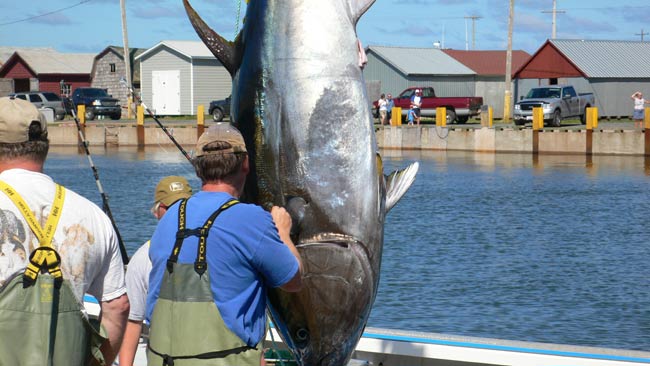
Today, species go extinct at a rate ranging from 10 to 100 species per million per year, and many more stand at risk of vanishing from the planet. Now environmental scientists say species extinction should not go beyond the threshold of 10 species per million per year — a boundary that the current rate of extinction has clearly exceeded.
The complexity of just keeping track of all species presents a problem for using extinction rate as a boundary, said Cristian Samper, director of the Smithsonian National Museum of Natural History in Washington D.C. Scientists don't even discover all existing species before they go extinct, with rates of extinction especially unknown for insects or most marine invertebrates.
There's also the fact that past mass extinctions, such as the Permian-Triassic event, have also exceeded the proposed extinction rate boundary. And some species have a higher natural rate of extinction compared with others.
Instead, Samper suggested two alternatives to extinction rates. Instead of focusing on a single extinction rate, scientists could focus on how population size, distribution and threat levels change for each group of species. They could also define species extinction as a probability based on evolutionary history for different branches of the tree of life.
Nitrogen and Phosphorus cycles

Nitrogen represents a crucial element for life, and the amount available decides how much plant life or crops can grow. Phosphorus is another crucial nutrient for both plants and animals. Limited amounts of both elements cycle through the Earth's systems, so that altering the cycles can deplete available reserves and lead to environmental damage or loss of species because of the different concentrations.
Environmental scientists have suggested that humans shouldn’t add more than 25 percent to the nitrogen that gets transferred from the atmosphere to land surface. For phosphorus, they suggested the human impact should not go beyond 10 times the background weathering that typically makes phosphorus available.
Those limits seemed too arbitrary for William Schlesinger, president of the Cary Institute of Ecosystem Studies in Millbrook, N.Y. Schlesinger noted that soil bacteria and ecosystem management can change nitrogen levels, so that the nitrogen cycle might tolerate greater human impact with the right counterbalances. By contrast, he said the proposed phosphorus cycle boundary was unsustainable and would allow for the depletion of phosphorus reserves within 200 years.
Schlesinger's biggest problem was with the idea of thresholds. Waiting to act until humans approach those boundaries simply allows for bad habits to endure and environmental consequences to accumulate, he said.
Climate change
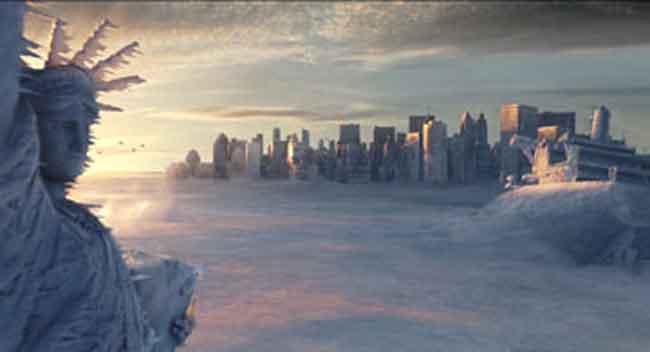
Many scientists and policymakers have aimed for 350 parts per million (ppm) as the long-term target limit for carbon dioxide concentration in the atmosphere. The limit was set because beyond that amount, the buildup of the greenhouse gas would push the human contribution to global warming beyond 3.6 degrees Fahrenheit (2 degrees Celsius). Yet that carbon dioxide target largely misses the point, according to Myles Allen, physicist and climatologist at the University of Oxford in England. He argued that the actions needed to avoid "dangerous climate change" remain the same regardless of the long-term concentration target.
Modern humans can't possibly claim to have control over whether carbon dioxide concentrations are 350 ppm or any other specific level in the future, Allen said. He also criticized the proposed boundary based on its high estimate of climate sensitivity, or the long-term warming response to the doubling of atmospheric carbon dioxide.
But Allen admitted that the 350 ppm concentration might still serve as a useful target. That's because scientists know that 15 to 20 percent of CO2 emissions hang around in the atmosphere indefinitely. Releasing a little over 1 trillion tons during the anthropocene era (now) of human-caused global warming would lead to a long-term CO2 concentration of about 350 ppm. Limiting the excess CO2 emissions to 1 trillion tons would be just about what's needed to keep the likeliest CO2-related warming peak below 2 degrees C — and humans are already halfway to that limit.

